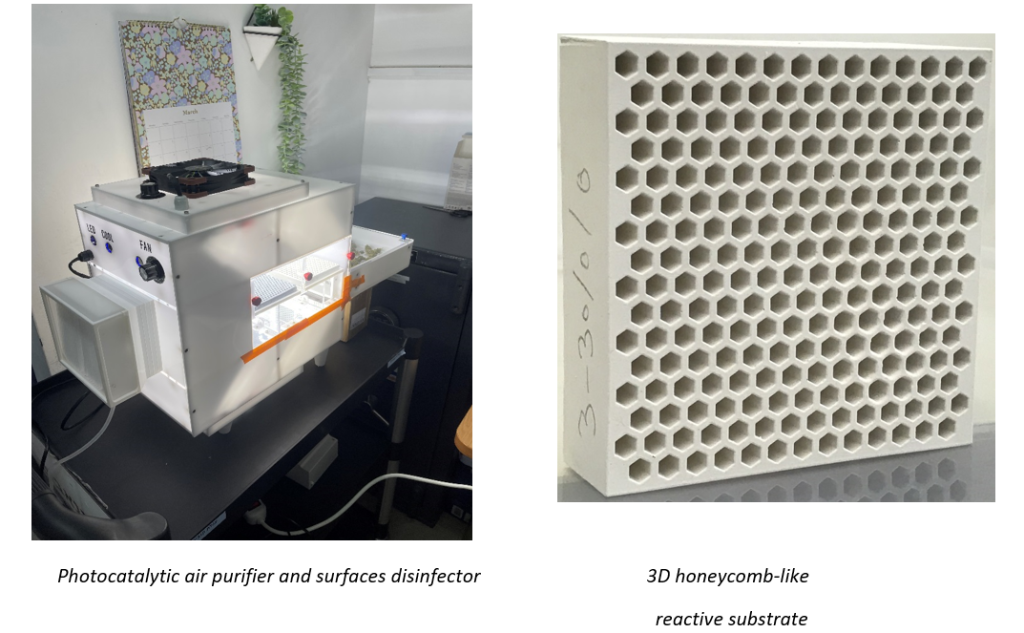Prof. Yoel Sasson and Dr. Hani Gnayem
Application:
Indoor air quality and surface contamination are critical concerns in various environments, including homes, offices, hospitals, and transportation. Traditional purification methods often rely on UV light, ozone generation, hydrogen peroxide or frequent filter replacements, which can be energy-intensive, potentially harmful, or require regular maintenance. There’s a pressing need for a safe, efficient, and sustainable solution for continuous air purification and surface disinfection in indoor spaces.
Our Innovation:
A novel family of visible light-activated photocatalysts based on bismuth oxyhalides semiconductors. These materials are passively activated by natural daylight or artificial indoor lighting, eliminating the need for UV lamps. The technology can be applied to various substrates, creating reactive surfaces capable of purifying air and disinfecting surfaces continuously. This innovation is protected by multiple patents and has been validated through rigorous testing.
Stages of Development:
- Fully developed scalable fabrication protocol of the active powders (photocatalysts).
- Reactive substrates coated with the photocatalytic substances have been fully tailored, characterized and tested.
- Robust POC has been harvested in diverse fields including oxidation of Volatile Organic Compounds, elimination of bacteria and viruses in both air and surfaces.
- A working prototype for decontamination of medical cannabis as well as purification of indoor air has been fully engineered, designed, devised and tested.
Advantages:
- Safe and non-toxic: Materials are less toxic than table salt
- Highly effective: 3-10 times more potent than competing materials
- Energy-efficient: Activated by visible light, reducing energy consumption
- Dual action: Provides both adsorption and oxidation effects
- Versatile: Effective against a wide range of pollutants, bacteria, and viruses, including SARS-CoV-2
- Sustainable: Continuous operation without consumables
- Ozone-free: Clean purification without harmful byproducts
- Cost-effective: Simple, scalable production process
- Low maintenance: No need for frequent filter replacements
Commercial Opportunity:
The global air purifier market is projected to reach $20.3 billion by 2027, with a CAGR of 10.8% (Grand View Research, 2020). This technology has applications across multiple sectors:
- Consumer air purifiers
- HVAC systems for commercial and residential buildings
- Healthcare facilities and clean rooms
- Transportation (automotive, aviation, public transit)
- Food storage and transportation
- Antimicrobial coatings for construction materials
- Specialized applications (e.g. odors removal)
By licensing this technology, companies can gain a competitive edge in the rapidly growing air purification and surface disinfection markets. The versatility of the technology allows for integration into existing products or the development of new, innovative solutions to address the increasing demand for clean, safe indoor environments.

